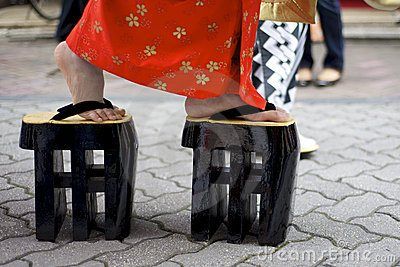Introduction
Nike, the world’s leading sportswear brand, has a rich history that spans over five decades. From its inception as Blue Ribbon Sports to becoming a global sports giant, Nike’s journey is one of innovation, strategic branding, and athletic excellence. In this blog, we will explore the history of Nike, its key milestones, and how it became the powerhouse it is today.
The Birth of Nike: Blue Ribbon Sports (1964)
Nike was originally founded as Blue Ribbon Sports (BRS) in 1964 by Bill Bowerman, a track and field coach at the University of Oregon, and Phil Knight, a former athlete and business student. Their goal was to provide athletes with high-quality footwear imported from Japan.
Bowerman was passionate about improving athletic performance, while Knight had a keen business sense. Together, they began selling Onitsuka Tiger (now ASICS) shoes from the trunk of Knight’s car at track meets. By 1971, their partnership with Onitsuka ended, prompting them to launch their own brand—Nike.
The Birth of the Nike Brand (1971)
The name Nike (pronounced “Nikey”) was inspired by the Greek goddess of victory. Along with the new name, the company introduced its now-iconic Swoosh logo, designed by graphic design student Carolyn Davidson for just $35. The first shoe released under the Nike name was the Nike Cortez, which quickly gained popularity among runners.
The Rise of Nike in the 1970s and 1980s
Nike’s growth accelerated in the 1970s, thanks to its focus on innovative shoe technology and endorsements from top athletes. Some key milestones during this period include:
- 1973: Nike signed its first athlete endorsement deal with track star Steve Prefontaine, boosting brand visibility.
- 1978: The company officially changed its name from Blue Ribbon Sports to Nike, Inc.
- 1980: Nike went public, raising capital to expand its global presence.
The Air Jordan Revolution (1984)
Nike’s biggest breakthrough came in 1984 when it signed a rookie basketball player named Michael Jordan. The partnership led to the creation of the Air Jordan brand, which revolutionized sneaker culture and sports marketing. The Air Jordan 1 was a massive success, cementing Nike as a dominant player in the sports footwear industry.
The Expansion of Nike in the 1990s and 2000s
Nike continued to grow throughout the 1990s and 2000s, expanding into new markets, launching groundbreaking products, and acquiring other companies. Some key developments include:
- 1991: Nike introduced the “Just Do It” campaign, one of the most successful marketing slogans in history.
- 1996: Nike signed Tiger Woods, expanding its influence in golf.
- 2003: The company acquired Converse, further strengthening its brand portfolio.
- 2008: Nike introduced Flyknit technology, revolutionizing sneaker design with lightweight, sustainable materials.
Nike’s Digital and Sustainable Transformation
As the world moved into the digital age, Nike adapted by embracing technology and sustainability. Some recent innovations include:
- Nike+ (2006): A partnership with Apple that allowed athletes to track their performance digitally.
- Sustainable Initiatives: Nike launched eco-friendly initiatives like Move to Zero, aiming for a zero-carbon, zero-waste future.
- Direct-to-Consumer Strategy: Nike shifted its focus to digital sales and online platforms, strengthening its e-commerce presence.
Nike Today: A Global Sportswear Leader
Nike is now the largest sportswear brand in the world, with a presence in over 190 countries and billions in annual revenue. The company continues to innovate in footwear, apparel, and digital fitness solutions, collaborating with top athletes and celebrities.
Conclusion
Nike’s journey from a small startup to a global powerhouse is a testament to innovation, marketing excellence, and strategic branding. From the Swoosh logo to Air Jordans, Nike has shaped sneaker culture and athletic performance worldwide. As it continues to evolve, Nike remains committed to pushing the boundaries of sports and fashion.
FAQs About Nike
1. Who founded Nike?
Nike was founded by Bill Bowerman and Phil Knight in 1964 as Blue Ribbon Sports. It was officially rebranded as Nike in 1971.
2. What was Nike’s first shoe?
Nike’s first shoe under its brand name was the Nike Cortez, released in 1971.
3. What does the Nike logo represent?
The Swoosh logo, designed by Carolyn Davidson, represents movement, speed, and victory.
4. Why is Nike so successful?
Nike’s success is attributed to its innovation, strong marketing campaigns (such as “Just Do It”), and high-profile athlete endorsements like Michael Jordan and Tiger Woods.
5. What is Nike’s slogan?
Nike’s famous slogan is “Just Do It,” introduced in 1988.
6. Is Nike involved in sustainability?
Yes, Nike is actively working towards sustainability through initiatives like Move to Zero, which focuses on reducing carbon emissions and waste.
7. What brands does Nike own?
Nike owns Converse and Jordan Brand, among other subsidiaries.
8. Where is Nike’s headquarters?
Nike’s headquarters is located in Beaverton, Oregon, USA.
9. What is Nike’s most popular shoe?
Nike has many popular shoes, but some of the most iconic include the Air Jordan series, Nike Air Max, and Nike Air Force 1.
10. How can I buy authentic Nike products?
You can buy authentic Nike products from Nike’s official website, retail stores, and authorized resellers.




excellent post, very informative. I wonder why the other specialists of this sector don’t notice this. You should continue your writing. I am sure, you have a great readers’ base already!
I don抰 even know how I ended up here, but I thought this post was good. I do not know who you are but definitely you’re going to a famous blogger if you are not already 😉 Cheers!
excellent points altogether, you simply gained a brand new reader. What would you suggest about your post that you made some days ago? Any positive?
Hi my friend! I wish to say that this article is amazing, great written and include almost all significant infos. I抎 like to look extra posts like this .
Well I truly liked reading it. This information offered by you is very practical for correct planning.